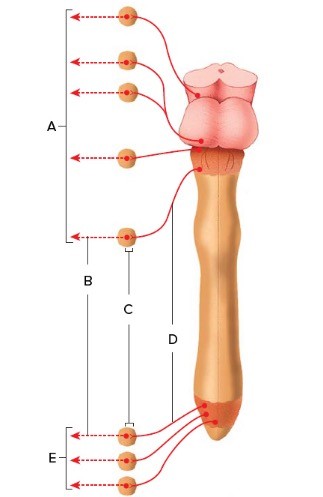 The figure illustrates the parasympathetic division. What does "E" represent?
The figure illustrates the parasympathetic division. What does "E" represent?
A. Terminal ganglia
B. Postganglionic neurons
C. Cranial nerves
D. Preganglionic neurons
E. Pelvic nerves
Answer: E
You might also like to view...
Which of the following is NOT a parasympathetic terminal ganglion?
a) Ciliary ganglion b) Pterygopalatine ganglion c) Submandibular ganglion d) Otic ganglion e) All are parasympathetic terminal ganglia
Blood flow through the capillary bed is regulated by ______.
What will be an ideal response?
The innermost layer of a blood vessel is the tunica adventitia.
a. true b. false
How is the cytotoxic T cell mechanism of action similar to that of complement?
A. Cytotoxic T cells activate B cells to produce antibodies. B. Cytotoxic T cells induce cell lysis with perforin, a protein similar to complement's MAC. C. Cytotoxic T cells secrete the proteins that activate complement. D. Cytotoxic T cells are antigen-presenting cells similar to the complement proteins found on B cells.